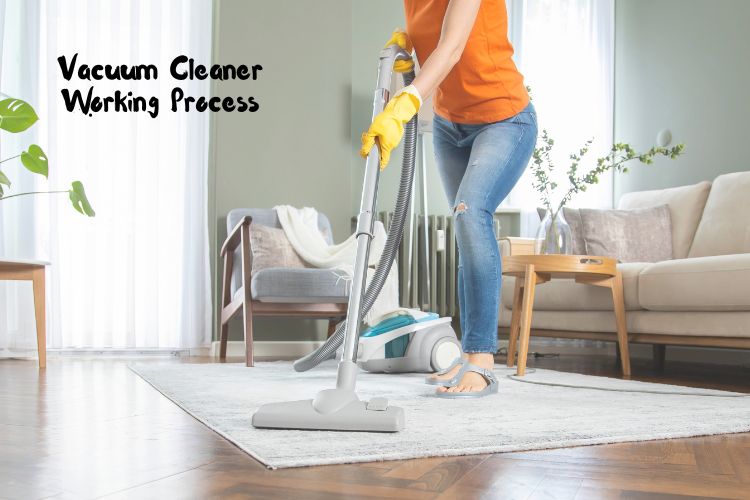Introduction:
Vacuum cleaners have become an indispensable tool for maintaining clean and dust-free homes. These efficient machines are designed to suck up dirt, dust, and debris from various surfaces, making our cleaning tasks much easier. But have you ever wondered how a vacuum cleaner actually works? In this article, we will delve into the inner workings of these devices, exploring the science behind their functionality.
The Basics of Vacuum Cleaning:
At its core, a vacuum cleaner works on the principle of suction. It creates a partial vacuum by extracting air from the cleaning nozzle, generating a pressure differential that forces air and particles into the machine. This process effectively removes dirt and debris from surfaces, leaving them clean and fresh.
Components of a Vacuum Cleaner:
To understand how a vacuum cleaner operates, let’s take a closer look at its key components:
Electric Motor: The electric motor is the heart of a vacuum cleaner. It provides the necessary power to drive the suction mechanism and other moving parts.
Fan: The fan is responsible for creating airflow within the vacuum cleaner. It draws air in through the cleaning nozzle and propels it through the machine, ultimately expelling it back into the room.
Bag or Canister: Vacuum cleaners come in two primary types: bagged and bagless. Bagged vacuums collect dirt and debris in a replaceable bag, while bagless models use a canister or dust bin to accumulate the waste. Both options have their advantages and drawbacks, and the choice depends on personal preference.
Filtration System: Vacuum cleaners employ filters to trap microscopic particles and prevent them from re-entering the surrounding air. High-quality filters enhance indoor air quality by capturing allergens and other pollutants.
Hose and Nozzle: The hose and nozzle serve as the interface between the vacuum cleaner and the surface being cleaned. These attachments allow users to reach into tight corners, under furniture, and across various flooring types.
Suction Mechanism:
The suction mechanism of a vacuum cleaner is facilitated by the fan, which draws in air and creates a pressure differential. When the vacuum cleaner is turned on, the electric motor drives the fan to spin rapidly, generating a low-pressure zone inside the machine. This low-pressure area causes air from the surrounding environment to rush in, carrying along with it dirt, dust, and debris. The air and particles are then propelled through the machine and filtered before being expelled.
Types of Vacuum Cleaners:

Now that we understand the basic principles of how vacuum cleaners work, let’s explore some of the vacuum cleaners available in the market today. It’s important to note that the “top” vacuum cleaner varies depending on individual needs and preferences. However, here are a few popular options:
Upright Vacuum Cleaners: These models are commonly used in households and are known for their ease of use and versatility. Upright vacuums usually come with a rotating brush roll that helps agitate and loosen dirt from carpets and rugs.
Canister Vacuum Cleaners: Canister vacuums offer excellent maneuverability and are particularly effective for cleaning hard floors, stairs, and under furniture. They consist of a separate canister unit connected to a wand and a cleaning head by a flexible hose.
Robot Vacuum Cleaners: As technology advances, robot vacuum cleaners have gained popularity. These autonomous devices navigate around a room, using sensors and cameras to detect obstacles and efficiently clean the floor without human intervention.
Handheld Vacuum Cleaners: Handheld vacuums are lightweight and portable, making them ideal for quick cleanups, car interiors, and small spaces. They are battery-operated and often come with a variety of attachments for different cleaning tasks.
Conclusion:
Vacuum cleaners have revolutionized the way we clean our homes, offering efficiency and convenience. By understanding the science behind their operation, we can make informed choices when selecting the vacuum cleaner for our specific needs. Whether you opt for an upright vacuum, canister vacuum, robot vacuum, or handheld vacuum, the key lies in finding a model that suits your cleaning requirements and delivers exceptional performance. With the right vacuum cleaner in hand, you can keep your floors spotless and enjoy a cleaner and healthier living environment.
You may also like
-
Hiring An Architect To Design Your Home
-
Winter is Coming: A Kansas Building Manager’s Guide to Preventing Frozen Pipes with Commercial Plumbing Services in Kansas
-
How to Install an Artificial Hedge Easily
-
Get Exclusive Diwali Offers on Whirlpool Double Door Refrigerators
-
Who is Best Pipe and Joint System Supplier in Malaysia

